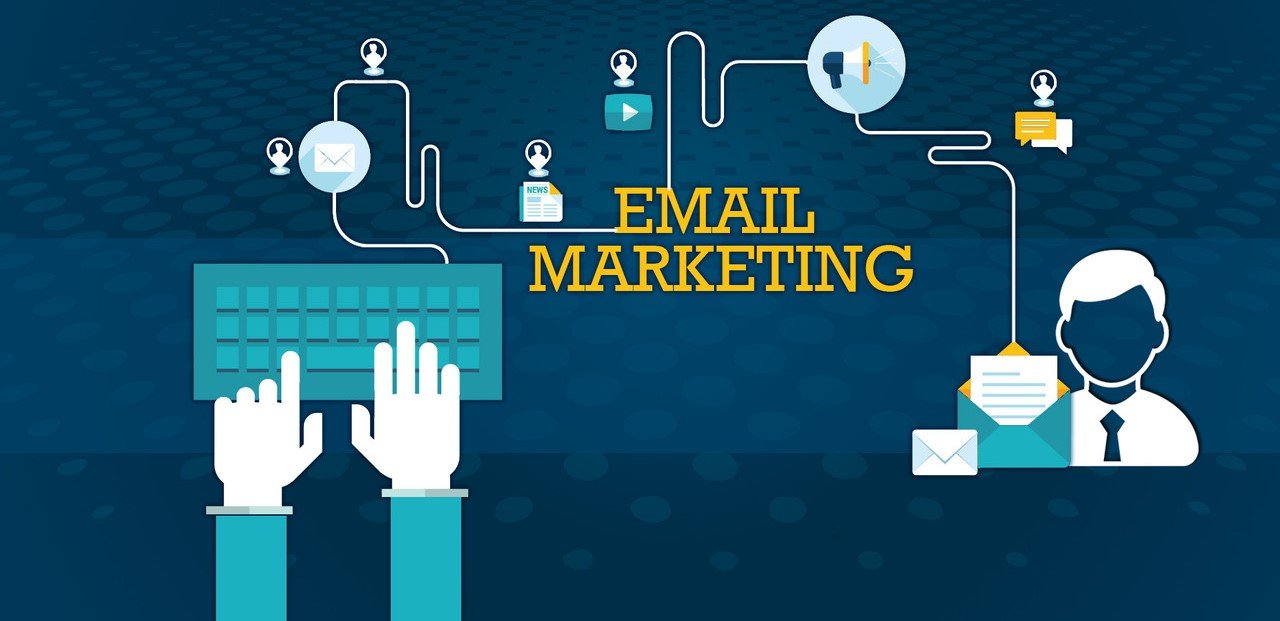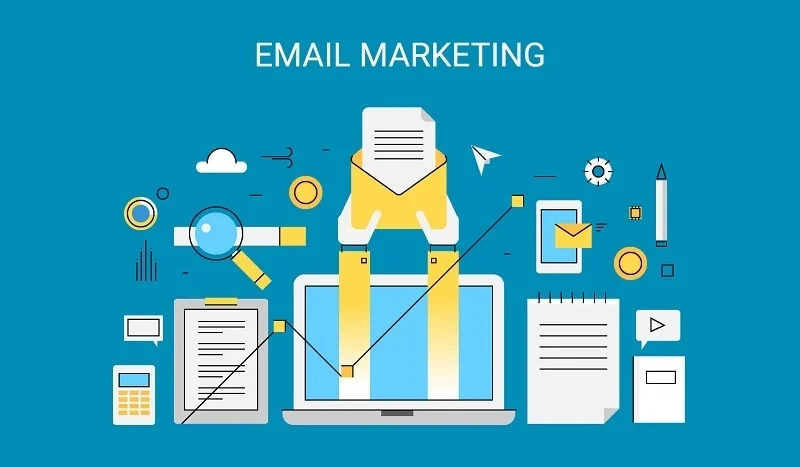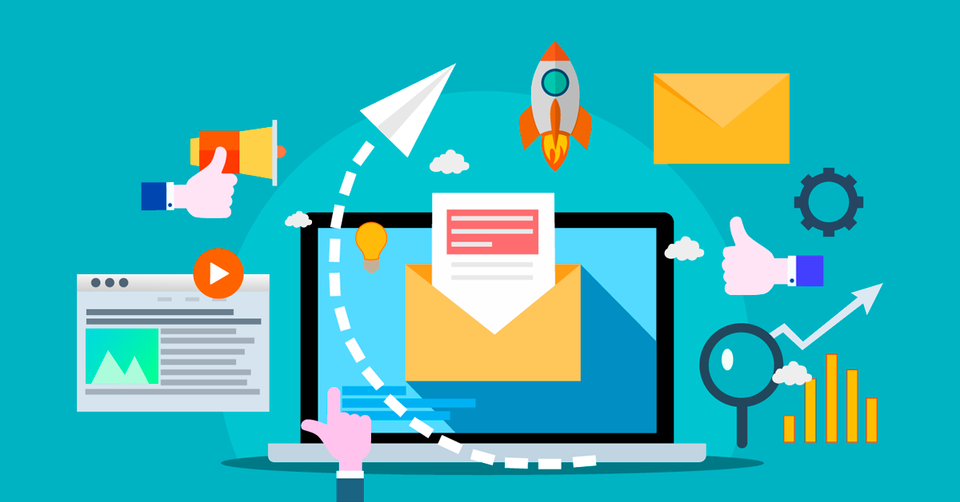Mastering Personalization in Email Marketing: A Comprehensive Guide

In the vast online world, where information fills every corner of our virtual lives, effective communication is crucial. Among the digital noise, email marketing stands out, delivering messages directly to individuals, cutting through the clutter. However, in this age of short attention spans and too much information, the importance of personalization in email marketing is vital. It's the key that helps messages stand out, connecting with recipients on a personal level.
Imagine getting an email that seems like it's just for you—a message that not only grabs your attention but speaks directly to your interests and needs. That's the power of personalization, an essential tool that turns ordinary emails into engaging conversations. It goes beyond just using someone's first name; effective personalization looks at how individuals behave, creating a tailored experience that builds engagement and loyalty.
In this look at the importance of personalization in email marketing, we'll uncover the details of customization, exploring how it goes beyond the surface to create meaningful connections. As we navigate the online world, personalization becomes our guide, leading us toward an era where every email feels like a personal conversation, not just another digital message.
Why Personalization Matters
In the bustling realm of digital marketing, the key to unlocking unprecedented success lies in the finesse of personalization. Crafting content that resonates with individual preferences isn't merely a trend; it's a strategic imperative for elevating engagement and conversion rates. Personalization, like a bespoke suit tailored to fit, ensures your message aligns seamlessly with the unique needs and tastes of your audience.
Impact on Engagement and Conversion Rates
The impact of personalized content on engagement and conversion rates is nothing short of transformative. When recipients feel a message is tailor-made for them, the clickthrough rates soar, and conversions become more than mere possibilities—they become probabilities. By infusing personal touches into your communication, you're not just addressing an audience; you're connecting with individuals on a personal level. This connection sparks trust, loyalty, and a genuine interest in what your brand has to offer.
Statistics and Case Studies
According to recent studies, segmented emails drive a staggering 30% more opens and 50% more click throughs than their unsegmented counterparts. This statistic alone underscores the power of personalized communication. Consider the landscape where most marketers inundate inboxes with 2-3 daily emails, and 12% opt for a weekly approach. Remarkably, 77% report an increase in email engagement over the last 12 months.
In the case of personalized content, the numbers tell a compelling story. Brands that prioritize individualized communication witness not just opens and clicks, but a deeper connection with their audience—solidifying personalization as the linchpin of successful digital marketing strategies.

Segmentation Strategies
In the dynamic realm of marketing, segmentation emerges as the linchpin for crafting personalized experiences that resonate with diverse audiences. Understanding the significance of segmentation in personalization unveils the gateway to cultivating lasting connections with your target demographic.
Significance of Segmentation in Personalization
Segmentation is the art of dividing your audience into distinct groups based on shared characteristics, behaviors, or preferences. In the realm of personalization, this approach is akin to tailoring a bespoke suit – it fits perfectly, leaving a lasting impression. By segmenting your audience, you unlock the ability to deliver content and experiences that align with individual needs and preferences. This targeted approach not only enhances customer satisfaction but also cultivates brand loyalty.
Tips for Effective Email Marketing List Segmentation
Creating a finely tuned email list is an art that involves dissecting your audience into meaningful segments. Start by analyzing demographics, understanding the nuances of behavior, and gauging preferences. Craft tailored messages that speak directly to each segment, fostering a sense of exclusivity. Implementing this nuanced approach ensures that your emails are not just landing in inboxes but are captivating attention and driving engagement. Remember, effective segmentation is the cornerstone of a successful personalization strategy, paving the way for meaningful connections in the ever-evolving landscape of digital communication.
Dynamic Content Creation
In the dynamic realm of digital communication, dynamic content stands as the linchpin, orchestrating personalized messages that resonate with diverse audiences. Dynamic content, a dynamic force in the digital landscape, adapts and tailors itself to the unique characteristics and preferences of each recipient. This malleability is not just a technical feat but a strategic one, allowing brands to engage in meaningful conversations with their audience.
Explore the Concept of Dynamic Content and its Role in Tailoring Messages
Dynamic content is the alchemy of personalization, transforming the one-size-fits-all approach into a bespoke conversation. It involves the creation of adaptable content elements that respond dynamically to user behavior, demographic data, or other predefined triggers. The result is a tailored message that not only captures attention but also establishes a connection with the individual recipient. At its core, dynamic content is a powerful tool for marketers seeking to deliver relevance in a noisy digital landscape. By understanding the nuances of their audience, brands can create a dynamic tapestry of content that speaks directly to the needs and interests of each consumer. This dynamic approach transcends traditional static content, offering a fluid and responsive communication strategy.
Showcase Examples of Successful Dynamic Content Implementation
Several industry pioneers have mastered the art of dynamic content, leveraging its potential to enhance user experience and drive engagement. E-commerce platforms, for instance, dynamically showcase products based on individual browsing history, creating a personalized shopping journey. Email marketing campaigns dynamically alter content to suit the recipient's preferences, boosting open rates and conversions.
Furthermore, streaming services use dynamic content to curate personalized recommendations, keeping users immersed in content that aligns with their viewing habits. These examples underscore the versatility of dynamic content in various sectors, affirming its status as a transformative force in modern communication.

Personalized Subject Lines and Preheaders
Crafting compelling subject lines and preheaders is an art that requires finesse and strategy. In a digital landscape inundated with emails vying for attention, your subject line and preheader serve as the first impression, the proverbial foot in the door. To stand out amidst the digital noise, infuse a touch of personalization.
Tips for crafting compelling and personalized subject lines and preheaders
- Know Your Audience: Understanding your audience is paramount. Tailor your subject lines and preheaders to resonate with their preferences, challenges, and aspirations. Personalization isn't just about using a name; it's about speaking directly to their needs.
- Dynamic Content: Leverage dynamic content to ensure your emails are highly relevant. Incorporate personalized elements based on the recipient's previous interactions or preferences, creating a sense of individualized communication.
- Segmentation is Key: Divide your audience into segments based on demographics, behaviors, or purchase history. Craft subject lines and preheaders that address the specific needs and interests of each segment, enhancing the relevance of your messaging.
- Urgency and Clarity: Create a sense of urgency without sacrificing clarity. Use action-oriented language and concise messaging to convey the value proposition effectively. A balance between urgency and clarity ensures your emails are both compelling and easily understood.
- Testing and Iteration: Regularly A/B test your subject lines and preheaders to identify what resonates best with your audience. Analyze open rates and engagement metrics to refine your approach continually.
A/B Testing Techniques for Optimizing Subject Lines
A/B testing is the linchpin of email marketing optimization, offering invaluable insights into what resonates with your audience. When it comes to subject lines, employing A/B testing techniques is not just a practice; it's a necessity for staying ahead in the ever-evolving landscape of digital communication.
- Variable Isolation: Test one variable at a time to pinpoint the exact element influencing performance. Whether it's the tone, length, or specific keywords, isolating variables allows for a clear understanding of their impact.
- Sample Size Consideration: Ensure your sample size is statistically significant. A small sample may not provide reliable insights, while a large sample ensures that your results are indicative of broader audience behavior.
- Testing Across Segments: Different audience segments may respond differently to various elements. Test subject lines across different segments to tailor your approach based on the unique characteristics of each group.
- Timing Matters: Experiment with the timing of your emails. Test different days and hours to identify when your audience is most receptive. Optimal timing can significantly impact open rates.
- Consistent Monitoring: A/B testing is not a one-time effort. Consistently monitor and iterate based on evolving trends and audience preferences. Regular testing ensures your strategies remain aligned with the dynamic nature of consumer behavior.
Behavioral Triggers
In the dynamic realm of marketing, behavioral triggers stand out as precision tools, adept at delivering messages that resonate precisely when they matter most. These triggers, hinged on understanding user behavior, navigate the delicate balance between relevance and timing. By delving into the nuances of user actions and preferences, businesses can orchestrate campaigns that seamlessly align with the ebb and flow of consumer engagement.
Leveraging Behavioral Triggers for Timely Relevance
Behavioral triggers pivot on the principle of understanding user actions to deliver messages that are not just timely but remarkably relevant. For instance, an e-commerce platform tracking a user's browsing history may deploy a trigger to send personalized product recommendations, capturing the user's interest at the peak of their engagement. This proactive approach not only enhances user experience but also cultivates a sense of personalized interaction, laying the foundation for sustained customer loyalty.
Exemplifying Trigger-Based Campaign Brilliance
Effective trigger-based campaigns are the epitome of marketing finesse. Picture a fitness app recognizing a user's consistent morning workouts and triggering motivational messages at the crack of dawn, inspiring continued dedication. Another classic example is a travel agency sending exclusive deals to users who frequently explore destination pages, leveraging behavioral insights to craft targeted promotions. These campaigns not only showcase a keen understanding of user behavior but also amplify the impact of marketing initiatives by aligning seamlessly with user interests and habits. In essence, behavioral triggers emerge as the artisans sculpting marketing messages into finely tuned experiences.
Unlocking the potential of customer data transforms the landscape, creating a dynamic interaction that transcends the ordinary. By delving into the realms of individual preferences, businesses can craft tailored experiences that resonate with their audience.
1. Exploring the Power of Customer Data:
Harnessing the wealth of customer data opens doors to a realm where precision meets persuasion. By analyzing purchasing patterns, preferences, and historical behaviors, businesses can uncover invaluable insights. This data-driven approach facilitates the creation of bespoke recommendations, elevating the customer experience. Through algorithms and machine learning, companies can decipher the intricate code of consumer desires, ensuring that each recommendation is a thoughtful nudge in the direction of satisfaction.
2.Showcasing Excellence in Recommendation-Based Marketing:
Amidst the myriad of brands vying for attention, some emerge as pioneers in the realm of recommendation-based marketing. These trailblazers understand that personalized suggestions are not just algorithms; they are a symphony of customer understanding. From e-commerce giants anticipating your next purchase to streaming services predicting your entertainment cravings, success stories abound. Brands like Amazon, Netflix, and Spotify exemplify the fusion of data-driven precision and customer-centric intuition, redefining the contours of marketing excellence.

Testing and Optimization
In the dynamic realm of digital communication, crafting personalized email marketing campaigns requires a strategic blend of creativity and precision. To enhance your outreach endeavors, consider employing A/B testing methodologies. Begin by experimenting with varied subject lines, content structures, and call-to-action elements. Rigorous testing allows you to discern what resonates best with your audience, refining your approach for optimal engagement.
Key Metrics for Email Campaign Mastery
Navigating the metrics landscape is crucial for measuring the efficacy of your email campaigns. Beyond open and click-through rates, delve into conversion rates, subscriber growth, and email forwarding statistics. These key metrics unveil invaluable insights into user behavior, guiding your decisions for future campaigns. Keep a watchful eye on these performance indicators to cultivate a data-driven strategy that propels your email marketing endeavors to new heights.
Tools and Technologies for Personalization
In the dynamic landscape of digital communication, personalized email marketing stands as a pivotal tool for businesses. Leveraging cutting-edge tools and technologies is essential to craft messages that resonate with individual recipients. Leading the pack is Customer Relationship Management (CRM) software, offering tailored insights for a personalized touch. Additionally, marketing automation tools like HubSpot and Mailchimp streamline the process, ensuring messages hit the right inbox at the right time.
Comparative Analysis of Platforms
Choosing the right platform is crucial for effective personalized marketing. Salesforce Marketing Cloud shines with its robust CRM integration, while Klaviyo specializes in e-commerce personalization. Mailchimp, a versatile option, caters to businesses of all sizes. The choice depends on unique business needs, emphasizing the importance of a tailored approach in the realm of personalized communication.
Future Trends in Email Personalization
Email personalization is evolving rapidly with the integration of cutting-edge technologies. Artificial intelligence (AI) is set to revolutionize marketing by enabling hyper-personalization, adapting emails dynamically based on user behavior and preferences. Interactive content, like polls and quizzes, engages users while providing valuable data for customization. The future holds the promise of augmented reality (AR) and virtual reality (VR) in emails, creating immersive brand experiences. Big data analytics will enhance marketers' ability to anticipate customer needs accurately. To stay ahead, businesses must embrace these trends, ensuring their emails not only get opened but resonate with each recipient individually.
Conclusion
In the dynamic landscape of email marketing, personalization is not just a trend but a necessity. The discussed trends, from AI-driven hyper-personalization to immersive AR and VR experiences, represent the next frontier in crafting compelling email marketing campaigns. Anticipating and meeting individual preferences will define successful marketing strategies. Embrace these innovations to remain relevant, build lasting connections, and revolutionize your email marketing for unparalleled success.